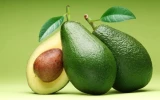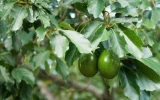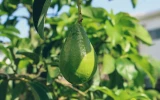How Long Does It Take for an Avocado Tree to Bear Fruit?
The time it takes for avocado trees to bear fruit can vary widely depending on several factors, like your local climate, tree variety, and care practices. In this article, we'll find out how long avocados bear fruit to help you set realistic expectations when planting your own.
Growing an avocado tree from seed can take anywhere from 5 to 13 years before the tree matures enough to bear fruit. However, if you want to shorten the wait time, you can purchase a young tree from a plant nursery, which can produce fruit within 3 to 5 years.
For your avocado tree to bear fruit, it must be properly pollinated. As you go through this article, we'll take a closer look at the importance of pollination in the fruit-bearing process of avocados.
Knowing how long it takes avocado trees to bear fruit prepares farmers for when starting an avocado farm from scratch.
Summary
- Avocado trees grown from seeds can take anywhere from 5 to 13 years to bear fruit, due to genetic variation, environmental factors, and the natural growth cycle of the trees.
- Grafted young avocado trees from professional plant nurseries, on the other hand, can start producing fruit within a relatively short time frame, typically within 3 to 5 years, due to the propagation of desirable traits from mature trees and the conducive environment provided by the nurseries.
- Proper pollination is essential for avocado trees to bear fruit, with cross-pollination between "Type A" and "Type B" flowers and the presence of pollinators like bees significantly improving the chances of a successful fruit set.
- The optimal temperature range for avocado trees to bear fruit is 65–75°F, and exposure to temperatures outside this range for prolonged periods can impair the tree's ability to bear fruit. Extreme heat or frost can damage the flowers and young fruit, thereby reducing the harvest.
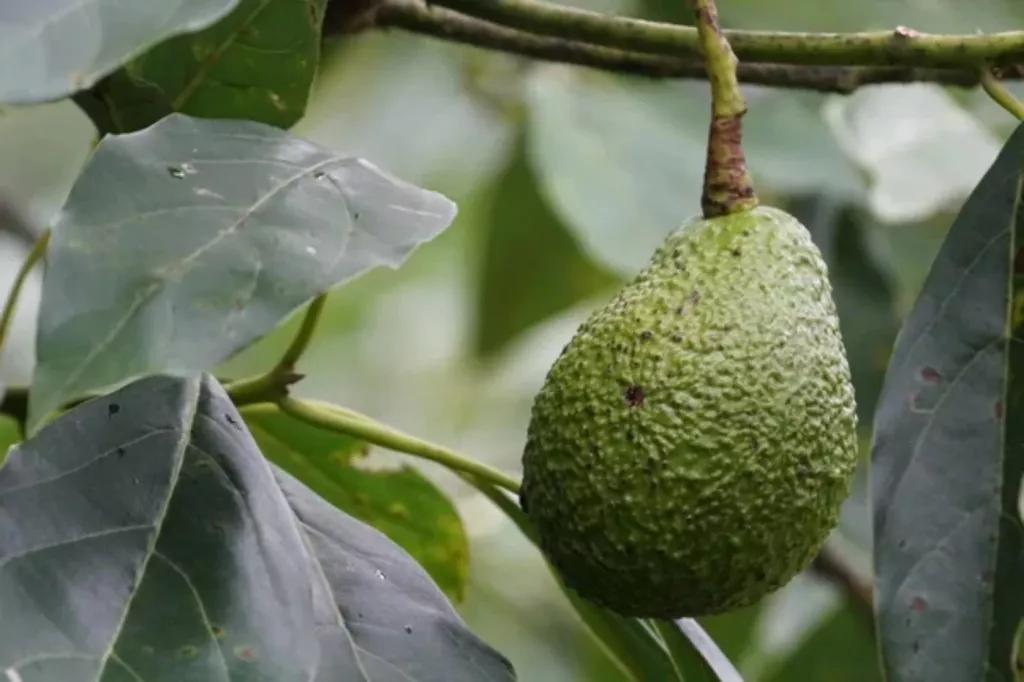
On this page:
Estimated Time for Avocados to Bear Fruit
| Stage | Time to Fruit |
|---|---|
| Growing from seed | 5-13 years |
| Growing from young tree | 3-5 years |
Estimated time for seed-grown avocados to bear fruit
Avocado trees are known for taking a long time to mature and produce fruit, making the process a true test of perseverance for gardeners.
The time it takes for an avocado tree to bear fruit can vary widely, typically ranging from 5 to 13 years, depending on various factors such as the tree's growing conditions, variety, and care.
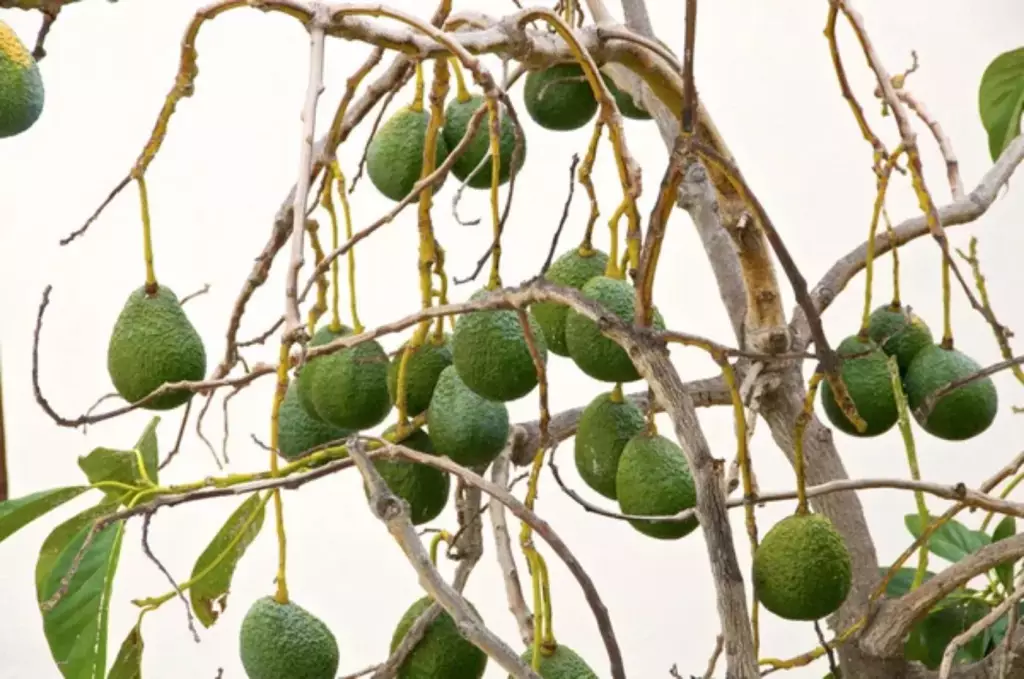
One of the primary reasons for the lengthy wait is that avocado trees grown from seeds do not always produce fruit true to the parent plant. This genetic variation can result in inconsistencies in fruit quality, taste, and maturation time, leading to a longer waiting period to obtain desirable avocados.
To ensure a high likelihood of producing fruit that resembles the parent plant, many commercial growers graft avocado trees rather than growing them from seeds.
The environmental conditions in which the avocado tree is grown also play a significant role in its development and fruit-bearing timeline. Avocado trees thrive in subtropical and tropical climates, and they require well-drained soil, ample sunlight, and protection from frost.
In less-than-ideal conditions, the growth of the tree may be slowed, further extending the time it takes for it to mature and produce fruit.
In addition to environmental factors, some avocado varieties are also known for their faster maturation and fruit production, while others may take longer. For example, the popular Hass avocado variety is known for its relatively faster growth and fruit-bearing capabilities compared to other varieties.
Regular watering, fertilization, and pruning can also help promote healthy growth and potentially expedite the tree's maturation process. However, despite the best care, the natural growth cycle of avocado trees dictates a significant waiting period before they reach maturity.
Estimated time for avocado saplings to bear fruit
The journey from a sapling to a fully mature avocado tree encompasses many growth stages. Typically, it can take anywhere from 3 to 4 years for a sapling to bear fruit if planted under optimal conditions.
As your tree grows, annual increments of about 3 feet per year can be expected in favorable conditions, eventually reaching heights of up to 40 feet. During these phases, your avocado tree is busy establishing a robust root system, and a strong trunk, and branching out to provide the framework for future fruit.
Purchasing a young tree from a professional plant nursery can indeed be an effective way to shorten the wait time for fruit production. These trees are typically well-cared for and nurtured to ensure their healthy growth and early fruiting.
One of the key advantages of buying a young tree from a nursery is that it is often grafted from mature specimens. Grafting is a horticultural technique where tissues from one plant are inserted into those of another so that they grow together.
This process allows for the propagation of desirable traits from mature trees, such as disease resistance, superior fruit quality, and early fruiting, to be passed on to the young tree.
As a result, the grafted young tree is primed to start producing fruit within a relatively short time frame, typically within 3 to 5 years, as compared to growing a tree from seed, which can take significantly longer.
Professional plant nurseries also provide an environment that is conducive to the healthy development of young trees. They have the expertise, resources, and facilities to ensure that the trees receive proper care, including optimal soil conditions, irrigation, and protection from pests and diseases.
Additionally, nurseries often offer guidance and advice on the appropriate planting and care of the trees, which can contribute to their successful establishment and early fruiting.
The Journey to Fruit Production in Avocados
The life cycle of avocado trees starts with a seed and ends with a mature tree that can produce fruit for decades. The process of avocado fruit production begins with pollination and continues through several stages until the fruit is ready for harvest.

The importance of pollination in the fruit-bearing process
Avocado trees require proper pollination to bear fruit. There are two types of avocado flowers, known as "Type A" and "Type B." Each type has a different pollination pattern.
For instance, the Hass variety, which falls under Type A, opens as female in the morning and becomes male in the afternoon. Cross-pollination between these types can increase fruit set as opposed to single-type pollination. Ensuring that you have both types in your garden can encourage this cross-pollination process.
While some avocado varieties are capable of self-pollination, the presence of pollinators, such as bees, can significantly increase the chances of successful pollination.
The transfer of pollen can occur through natural means, but in commercial orchards, growers often rely on hand pollination to ensure a higher fruit set.
The process of fruit development
After successful pollination, the fertilized flower develops into a small, green fruit. Over time, the fruit grows in size and undergoes several physiological changes. Avocado trees typically produce fruit between December and May.
During this stage, you may need to provide the tree with adequate water, nutrients, and sunlight to support the healthy development of the fruit. Proper care, including pruning and pest control, is essential to minimize the risk of fruit damage and ensure optimal growth.
Transitioning to maturity
As the avocado fruit continues to develop, it progresses through different stages of maturation. The fruit transitions from a small, hard green stage to a larger, softer fruit with a darker skin color.
The timing of maturation varies depending on the avocado variety and environmental conditions. Growers monitor the fruit closely during this stage to determine the optimal time for harvest.
Waiting for the first harvest
Once pollination occurs, your avocado tree still requires a significant amount of time before it can produce fruit. Typically, a sapling can take 3 to 5 years to bear fruit, but if you've planted a seed, the wait can be up to 13 years. Avocado fruit production becomes more stable and consistent when the tree reaches the age of 13-15+ years.
During this period, the tree is developing a robust root system and sturdy branches capable of supporting the weight of avocados.
The timing of avocado fruit harvest is critical to ensure the best flavor, texture, and overall quality. Harvesting typically occurs when the fruit reaches its desired size and maturity.
This is often determined by assessing the color, firmness, and oil content of the fruit. Avocado growers carefully hand-pick the fruit to avoid damage and ensure that it is harvested at the peak of ripeness.
Factors Affecting Avocado Tree Fruit-Bearing
When you're looking forward to juicy avocados from your own tree, knowing the factors that affect fruit production such as pollination, climate, and temperature, plus soil and watering methods, can significantly increase your chances of a bountiful harvest.
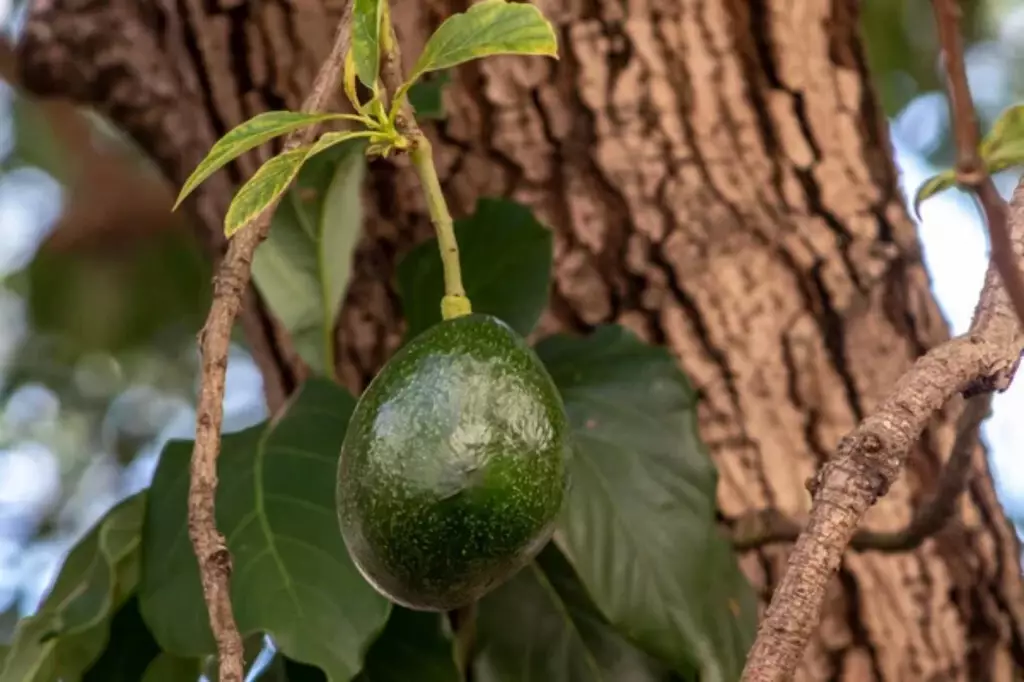
Climate and temperature requirements
Your avocado tree thrives in temperatures ranging from 65-75° Fahrenheit and prefers a climate like those found in USDA zones 9-11, where fruit production is more reliable.
Exposure to temperatures outside this range for prolonged periods can impair the tree's ability to bear fruit. Frost or extreme heat can damage the flowers or young fruit, reducing your harvest. You can learn more about the ideal climate conditions that allow avocado trees to flourish in this article.
Soil and watering essentials
Avocado trees need well-drained soil to prevent root rot, a condition that stifles growth and fruit production. Make sure your soil allows for proper drainage and aeration.
Your tree requires consistent moisture without becoming waterlogged when it comes to watering. Deep, infrequent watering is more beneficial than shallow, frequent watering, promoting a healthier root system that supports fruit development.
Pruning and tree care
Proper pruning helps maintain the tree's overall health, shape, and size, while also promoting fruit production. Here are some key aspects to consider:
-
Avocado trees should ideally be pruned after the harvest season to avoid interfering with the fruiting cycle. Pruning during the dormant season helps minimize stress on the tree and allows for new growth to emerge before the next fruiting cycle.
-
The primary goal of pruning avocado trees is maintaining an open canopy structure that allows sunlight to penetrate the tree. This promotes uniform fruit development and reduces the risk of disease. Additionally, selective pruning of dead or diseased branches is essential to prevent the spread of infections and to encourage new growth.
-
Proper tree care includes regular irrigation to ensure adequate moisture, especially during dry periods. Additionally, fertilization with a balanced nutrient mix is crucial for healthy tree growth and fruit development. Maintaining a weed-free zone around the tree base also helps minimize competition for nutrients and water.
-
Regular monitoring for pests and diseases is vital for maintaining tree health. Timely intervention with organic or chemical controls can help prevent damage to the tree and its fruit.
Understanding how long it takes for avocado trees to bear fruit and their typical bearing patterns, can help farmers plan appropriately.
Avocado tree variety and rootstock choices
Avocado trees are broadly categorized into two types: A and B flowering types. It is essential to plant a mix of both types for effective cross-pollination, which enhances fruit set and yield.
Within each type, there are numerous avocado varieties, each with unique characteristics such as fruit size, flavor, and tree size. Some popular varieties include Hass, Fuerte, Reed, and Bacon. Factors to consider when selecting a variety include climate suitability, desired fruit attributes, and market demand.
Rootstocks also influence factors such as tree size, tolerance to soil conditions, and resistance to diseases. For example, the use of clonal rootstocks can provide uniformity in tree growth and fruit quality.
Additionally, certain rootstocks offer resistance to soil-borne pathogens and nematodes, which can enhance the tree's longevity and productivity.
Different avocado varieties and rootstocks have varying degrees of adaptability to specific climates and soil conditions. Some varieties are better suited to colder climates, while others thrive in warmer regions.

Similarly, certain rootstocks perform better in heavy or alkaline soils, while others are more adaptable to sandy or acidic soils. Understanding the compatibility of varieties and rootstocks with local environmental conditions is crucial for long-term success.
Additionally, certain rootstocks are bred for resistance to specific soil-borne diseases, such as phytophthora root rot. By selecting disease-resistant rootstocks, growers can mitigate the risk of tree loss and ensure the long-term health of their orchards.
